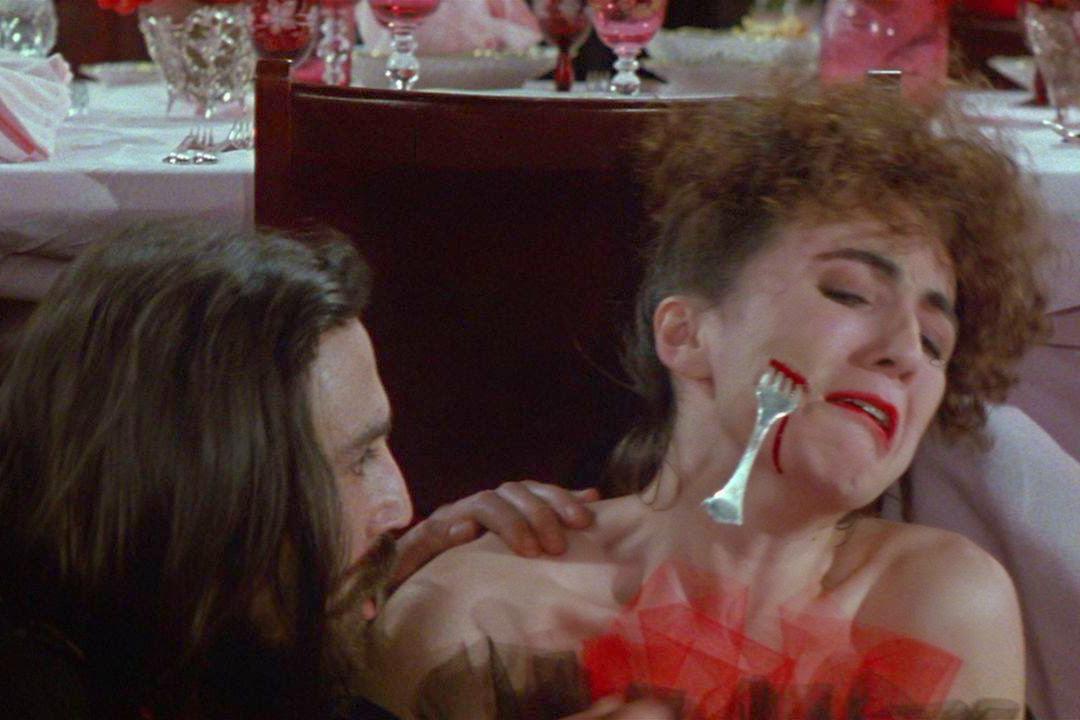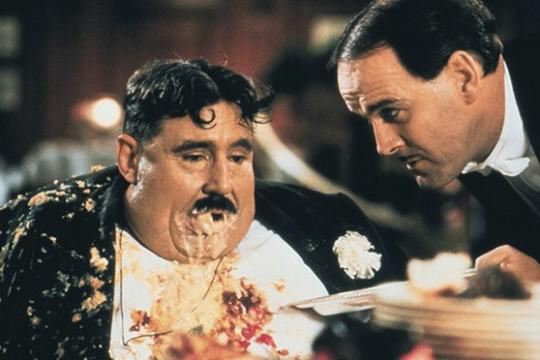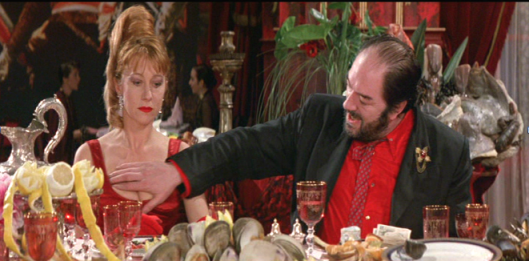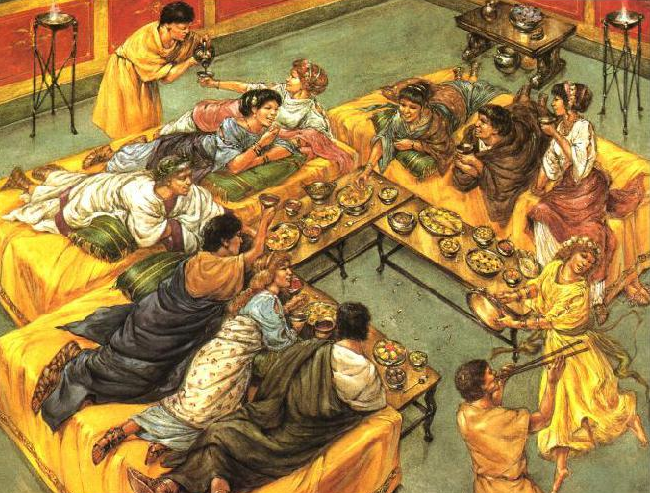How to hold a fork: the proprieties of posture and demeanour
Burping at the table is wrong – or is it? Margaret Visser looks at centuries of rules governing the way we eat and ultimately how human groups define themselves and relate to each other

Your support helps us to tell the story
From reproductive rights to climate change to Big Tech, The Independent is on the ground when the story is developing. Whether it's investigating the financials of Elon Musk's pro-Trump PAC or producing our latest documentary, 'The A Word', which shines a light on the American women fighting for reproductive rights, we know how important it is to parse out the facts from the messaging.
At such a critical moment in US history, we need reporters on the ground. Your donation allows us to keep sending journalists to speak to both sides of the story.
The Independent is trusted by Americans across the entire political spectrum. And unlike many other quality news outlets, we choose not to lock Americans out of our reporting and analysis with paywalls. We believe quality journalism should be available to everyone, paid for by those who can afford it.
Your support makes all the difference.People photographed several decades ago often look strangely foreign to us. This is not only because of changing fashions in clothing, or in furnishings and photographic props, or the faded quality of the pictures. All these enter into it, of course, as does the technology of the time, which obliged people to “freeze” when their picture was taken. It is also their facial expression, their posture, their attitude towards the camera which are of another world.
Modern faces are far more self-conscious than faces used to be, and their expressions conform far more strictly to socially preset patterns; our posture too is stylised and conventional. Even our striving to look “natural” and “relaxed” is learned from such specifically modern experiences as a lifetime’s acquaintance with photography. There have always been fashionable faces and expressions, as well as ways of moving and standing and sitting, which marked an epoch. There was, for example, in late 17th-century Europe a female face and gaze, which was de rigueur if a woman was to be considered desirable in fashionable circles; there was also an upper-class 18th-century stance, stiffly upright for women, deliberately nonchalant and carefully relaxed for men; there were 19th-century figures and a 19th-century walk; and so on. Today, there are new constraints (we prefer to call them “styles”; they change slightly every few years), imposed upon our demeanour by the ubiquity of images in our world.
We cannot live in a modern city without seeing ourselves constantly, in mirrors and panes of glass, in shop windows as we walk down the street, in photographs and moving pictures. We know what we are supposed to look like, from posters and television images of people whose shapes, faces, and expressions are admired, widely publicised, and imposed upon us as ideals to be emulated. In movies with historical subjects, although everything may be done to make costumes authentically of the period, postures – and particularly faces – are seldom convincing; modern actors have modern faces, especially if they are “stars”, chosen for their value as trendsetting images.

One of the reasons why we frantically endeavour to reduce our weight is that the thinner the body, provided it is healthy, the better it seems to look – in a photograph. Photographs are “framed” to select subject matter from a single point of view and to reject other things, other moments, other angles of vision. They are two-dimensional, incapable of change or response, and reflect visual signals only; they do not offer the total impression a living person makes. But their power as images, and the impression they give of capturing “reality,” reflect social prejudices about body shape and stance; they then in turn manage those prejudices, and demand adherence to them. We learn how to stand, sit, turn our heads, smile when a photograph is taken. When we walk down the street or sit down in a restaurant, we compose our features and control our gestures to fit preconceived norms. We come to take up these poses and facial expressions habitually, and they then seem natural, to be taken for granted; people who fall away from the ideal look very strange to us, and are easily suspected of being mentally ill. As usual, eating together requires the utmost consideration for the expectations and sensitivities of others. It follows that, at table, faces and bodies should with especial strictness conform to the rules.
Manners books that survive from the past give us some idea of the iron control which we exercise over ourselves, for in advocating the norms we now almost automatically follow, they remind us that there are (or were) other possibilities. People are often told in such books, for instance, not to roll their eyes: do not roll them back when drinking, or stare up at the ceiling. “It is discourteous to look askance at others while you are drinking,” Erasmus wrote, “just as it is impolite to turn your neck round like a stork lest a drop remain at the bottom of the cup”; it is preferable to confine your gaze by looking into the glass as you drink. Mouths must not pour or gape, twist, purse themselves up, or twitch, he went on; it is aggressive and threatening to bite the lower lip with the upper teeth, or the upper lip with the lower teeth. Facial expressions must not let feelings appear too obviously: an anonymous manners book advised, in 1701, that one should avoid frowning and glowering when one is not served with what is clearly a delicacy.
People needed in the 17th century to be told not to stare at what is on others’ plates, not to look envious, or as though they were comparing amounts or keeping an account of how much everyone had eaten. One should even avoid the excessive piety which was suggested by rolling the eyes upward during grace. It was impolite, Erasmus had said, “to stare intently at one of the guests. It is even worse to look shiftily out of the corner of your eye at those on the same side of the table; and it is the worst possible form to turn your head right round to see what is happening at another table.” He advises also against staring at someone with one eye open and one shut, and against arching the eyebrows arrogantly or lowering them fiercely; one should not have an irresolute brow like a hedgehog, or a menacing one, like a bull.
Modern faces are, comparatively speaking, exceedingly inexpressive: there is now, on this point, little need to warn people to “behave.” We know that it is safest, most guarded, most “becoming” (and photogenic) to remain impassive and disengaged – what might today be called “cool.” Other people are watching us, and we are extremely conscious of the way we look, of the narrow limits of facial expressiveness our culture permits, and of how they might therefore judge us. It would occur to few of us to single out someone and stare at them with one eye shut. It has become habitual with us not to worry about getting enough to eat; and the excitement of noticing who gets the best piece of any dish has diminished, now that less meaning and status are attached to who gets what.
We probably smile more now than was customary in the past; in this respect we have become more expressive, rather than less. Until the end of the 18th century, the extent to which one should stretch one’s mouth in a smile was subject to strictures. We have seen that baring the teeth for any reason could be startling at table; complaints about showing teeth used often to mention their blackened state, and doubtless improvements in dental science and hygiene have contributed to our relaxation of rules about smiling and laughter. But in addition decorum, as so often, meant a tranquil demeanour, whereas laughter and even smiling mark emotional engagement and, if too vivid, a suggestion of loss of control. In the 15th century, grinning and “mowing,” or making faces, at table is discouraged in John Lydgate’s 1476 book Table Manners for Children. (It is certain that deliberately “pulling faces” to increase the expressivity of one’s discourse was until very recently more common than it is now.) Portraits showing the sitter’s teeth in a smile were always rare; laughing subjects appear usually in paintings where the decorum is deliberately low. Erasmus says that smiling so broadly that your cheeks wrinkled and your teeth were exposed was impolite, and reminded people of dogs. He suggests covering the face with a napkin if uncontrolled laughter should break out at table. (In the past, people appear to have covered their faces with cloths and kerchiefs on many occasions: for grief, for fear, for delicacy and shame.) A hand at least should cover a laughing mouth – a preference which still operates in modern manners, though we possibly do it more because of the risk of arousing disgust, especially when we have been eating, than because laughing is in itself indecorous.

The cause for any laughter is, of course, always to be out in the open: nobody is to be made to feel they might be the object of secret mirth. The distinction between laughing at somebody and laughing in sympathy or to show good-naturedness is very culture-specific, and still liable to cause misunderstandings in different parts of Europe. By the 18th century, any sudden bodily response to humour was frowned upon in genteel circles. William Pitt, in a letter to his nephew in the 1750s, said it was “rare to see in any one graceful laughter.” Stooping, gesticulations, and “movements of the face” were similarly to be avoided. Colonel Forrester said in 1734 that passion is a “prodigious Enemy to Beauty.” The rehabilitation of sentiment, and of the expression of strong feelings, was required before a cool classic pose could be broken, without embarrassment – but still within limits.
Stillness of feature, in the 17th and 18th centuries, corresponded to the immobility required by correct posture. At table, one was to sit bolt upright, in spite of the increasingly generous space allowed between diners. There were to be no leaning, either to left or to right, and no elbows on the table, for these encroached on the space of others and suggested a lack of total bodily control. “Stooping” forward was almost impossible for women and older men in corsets; and in any case the rule against any appearance of over-absorption in the food discouraged it. It was especially low – the mark of a peasant, over-attached to his dinner and solicitous for it – to embrace one’s dish with one arm. Elbows on the table suggest familiarity, or the taking of liberty. “It is permissible for the elderly and convalescent to lean one or both elbows on the table,” Erasmus had counselled, “but this, as practised by some affected courtiers who consider their every action elegant, is something to be avoided, not imitated.” The idea that one might very elegantly place elbows on the table is clearly an old one; it is always essential, as we have seen, to do it only if all other signs indicate that one is controlled and securely mannerly. But the long insistence in our culture on showing bodily control and not trespassing upon the space of others has generally made elbow-leaning indecorous, in the manners books at least. In 1923, WM Handy says elbows on the table show that “one feels himself at home; and also, that at home he is apt to slouch!” Emily Post said one could lean on elbows only when “alone and ill.” She wonders whether we should blame the reprehensible spread of the habit on noisy restaurants, where customers have to lean forward to hear properly.
Consideration for dinner companions means not interrupting the flow of eating, drinking, and conversation by drawing attention to oneself, not giving others cause for worry, not making them wonder what any of your movements might portend. A diner must show competence above all, and predictability: only these reassure the people present that they will eat in peace. Bodies are kept firmly under control in part because other people immediately imagine themselves suffering any physical misfortune they witness. There is sympathetic unease if one is seen pointing a knife at one’s face, sweeping the soup spoon towards one’s lap, swinging perilously on the chair, or sitting so far from the table as to be at risk of spilling food on its way to one’s mouth – even if it never comes to that. Dirt that does not directly come into contact with others nonetheless disgusts their sensitive and sympathetic imaginations; 17th-century manners books insist, for example, that napkins should not become too soiled, because other people will feel sick if they see you wipe your mouth on a filthy napkin.
Overt greed is always banned at table. “Do not reach out for anything your host has his eye on,” says the Old Testament book, Ecclesiasticus, “Do not jostle him at the dish.” One must usually ask somebody close to the plate or to the condiment required to pass it; in this way, movements remain small, and diners are brought into relationship with one another. “Not reaching” is paying attention to the limitations of one’s allotted space; it goes together, in this sense, with keeping one’s elbows to one’s sides and not putting them on the table. Reaching across the table is occasionally allowed, in Latin America, for instance – but only if manners are elaborated so that one can show that the reaching is done in order not to disturb others, and never just to snatch on one’s own behalf. One may, for example, politely stand up in order to take something far away from one’s place. Where talking is a necessary aspect of a meal together, not talking can be taken for a sign of greed, profiting from the conversation of others in order to get more eating done. Athenaeus gave an example at the turn of the second and third centuries.
Anglo-Saxon table manners allow, even prefer, that a diner should eat, where only one hand need be used, with the left hand lying on his or her lap. It is a limitation on one’s ability to grasp things, like the decision to use only the right hand, or only three fingers. Emily Post, who is acerbic about the idea of using the right hand only (“That one should pretend to have a paralysed left hand is not in accord either with traditional behaviour or with good sense”), nevertheless suggests the practice as a good way of training children to hold unoccupied hands still, and not to prop their heads on one hand while eating: “By and by they can eat without thinking – after they have had enough of this training to check sloppiness instinctively. Do you see?” On the Continent of Europe, however, propriety enjoins diners to sit with both hands in full view of the company; most correctly, unused hands should rest on the table’s edge, being visible only from the wrists. (Erasmus had commanded boys to “have both hands on the table, not clasped together, nor on the plate.”) The Anglo-Saxon custom of permitting guests to sit with one hand hidden seems, to Continentals, at best a sad sign of naiveté.

One reason for hands being kept in sight used to be that people had to learn not to scratch at table. Giovanni Della Casa’s 16th-century tome Galateo: The Rules of Polite Behaviour says, for instance, that those serving were not to scratch their heads – or anything else – “nor place their hands on any part of the body which is kept covered, nor even appear to do so, as do some careless servants who hold them inside their shirt or keep them behind their backs hidden under their clothes. They must rather keep their hands in sight and out of suspicion...” This rule holds even more strongly for diners, who are constantly warned not to stroke their beards, twiddle their moustaches, rub and pat themselves, or scratch their heads. Erasmus says it is unsightly to scratch, “especially if it is done through habit rather than necessity”. John Russell’s Boke of Nurture counsels against “clawing your back as if after a flea, or your head as if after a louse.” Fleas, like gristle in the mouth or fibres wedged between the teeth, are to be ignored by polite people. The discomfort they cause must be heroically endured and not only hidden from view, but kept from the suspicions of others.
Gesticulation must be controlled, especially at dinner, for flapping arms might incommode one’s neighbours and might even knock over objects standing on the table. Too much movement also sins against calmness of demeanour. It is clear that people untrained in upper-class immobility used to find gesticulations and fiddling at table a tremendous temptation. “Some people eat or drink without stopping,” Erasmus tells us, “not because they are hungry or thirsty but because they cannot otherwise moderate their gestures, unless they scratch their head, or pick their teeth, or gesticulate with their hands, or play with their dinner knife, or cough, or clear their throat, or spit.” He adds: “Such habits, even if originating in a sort of rustic shyness, have the appearance of insanity about them”. The sociologist Erving Goffman has shown how, in our own day, these idiosyncrasies can still be judged as signs of idiocy.
The head must be held upright, not shaken or allowed to lean to one side. Bending one’s head on one side suggested hypocrisy, according to The Young Scholar’s Paradise; Erasmus says side inclinations of the head are the gestures of mimes. Hand movements must be precise and controlled and feet must be kept still. “Twist not your neck askew, like a jackdaw,” entreats John Russell’s Boke of Nurture. “Claw not at your codpiece. Let there be no picking or shrugging, as if ye would saw wood; do not wring and rub your hands, nor puff up your chest, nor pick your ears, nor be slow of hearing... Beware of making faces... nor yet lick your lips or drivel... Do not trample with your feet, or straddle your legs; jetting [thrusting the legs in and out or bouncing them up and down] is bad manners.” It is rude to stuff your cheeks, not only because of the danger of arousing disgust but because, as the ancient Greeks had also insisted, a bulging cheek works too hard, and shows a lack of poise and balance. Erasmus adds that dinner guests should not sit with one shoulder up and the other down, or with one hand resting on the groin, even though some people think the latter gives a soldierly, macho air. He says crossing one leg over the other is “a sign of uneasiness,” and sitting with the right foot resting on the left thigh used to be a posture customary in kings, but it has gone out of fashion. When people sat on benches and very close together, there were further temptations to misbehave, such as sliding a leg under a neighbour’s thigh. “You are full lewd if you do it,” says the first Boke of Curtasye; “lewd” then meant “ignorant” rather than “lascivious”.

Noses must, of course, be kept clean and dry; no sniffing is allowed. We have seen why eating with a dripping nose is even worse than chewing with an open mouth. Blowing the nose, says Erasmus, is one of the attentions to the body that ought to be paid before the meal begins; others are urinating, defecating, and letting out the belt a few notches (it would be rude to do the latter at table because it looks greedy). One really should not blow the nose at table. If it is unavoidable, you must turn aside, use a handkerchief if you possess one, “nor look thereon,” adds Hugh Rhodes; “to some it is loth”. “If, in clearing the nose with two fingers, some matter falls on the ground,” says Erasmus, “it should be immediately ground under foot.” All noises, other than speech, are to be reduced to a minimum, and especially those that draw attention to the bodies of the diners. One must not sing unless everyone agrees to do so. “In the Presence of Others sing not to yourself with a humming Noise, nor Drum, with your Fingers or Feet” is the fourth rule of etiquette in the traditional collection written out by the young George Washington.
All the misdemeanours so far mentioned can be controlled with practice and forethought. There are others, however, most of them the result specifically of eating, which are involuntary. This does not mean that they are condoned; on the contrary, the rules forbidding them are some of the strictest of all. A sneeze or a cough is nasty because it is a sudden sound and might spray the guests. We must handle a cough or a sneeze somewhat as we do a laugh, by muffling it; we must also turn away from the company while it is happening. In the ancient world, however, sneezing, like spitting, was slightly awesome behaviour. It was an omen, a message from what we would call the subconscious – people who say “God bless you” when someone sneezes, or who count sneezes and assign good or bad fortune to the number, do so in this tradition.
Erasmus tells us that polite people in his day crossed their faces after sneezing, raised their caps and acknowledged the blessings of the company, and then begged pardon or gave thanks; it was very rude not to bless someone who sneezed, and polite boys raised their caps also when a high-ranking person sneezed and was blessed for it. Hiccuping has tended to be blamed on eating or drinking a lot. It is therefore reprehensible in modern Europe and North America, where manners require one to eat or drink “an elegant sufficiency,” but considered fortunate when repleteness is thought to be an especially pleasant state. Among the Tanga islanders of Papua New Guinea, for example, hiccupping is a sign that one has enjoyed the meal; and an especially strong attack of hiccups is a signal from the ghosts, who want a portion of food. Belching is always a more remarkable phenomenon than hiccupping and not, like the latter, merely faintly ridiculous. (The most famous attack of hiccups in Western literature occurs in Plato’s Symposium, where the remedies administered to the helpless, hiccupping Aristophanes include holding his breath, gargling, and tickling his nostrils to elicit a sneeze. The last method of the three is efficacious in his case. Eryximachus, the doctor who prescribes the cures, has a name which means “Belch-battler.”)
Belches expel breath, while hiccups attempt to suck it in; and belches can be produced to order. In our own culture, burping is roundly disapproved of: polite people must struggle to repress it. If they fail, they are acutely embarrassed. With us it is purely the sound, the mouth opened neither to eat nor to speak, and the lack of ability to control a bodily lapse, which make everybody cringe; in the past it was really bad to belch near someone’s face. In Hugh Rhodes’s Boke of Nurture we read: “Belch near no man’s face with a corrupt fumosity. Turn from such occasion, it is a stinking ventosity.”
John Russell puts belching in a group with various loud breathings: “Do not sigh with your breast, or cough, or breathe hard in the presence of your sovereign, or hiccough [his word is ‘yexe’, otherwise known at this period as ‘to sobbe, or have the hicket’], or belch, or groan”. Erasmus warns that one can get into the habit of constantly belching and find it exceedingly hard to stop doing so. We are accustomed to ascribing extreme exoticism to cultures where a polite guest is expected to fetch up a belch in order to show appreciation; examples are traditional Chinese, Japanese, and Middle Easterners, or various African societies, such as the Pedi of South Africa, who have a charming onomatopoeic name for the happy belch: pôtla.

Coughing, sneezing, hiccupping, and belching were all to be muffled in 16-century Italy, but the author of the Court of civill Courtesie warns against being too delicate and “nice” about such cover-ups. Erasmus had gone further: he firmly condemns people who, in the name of courtesy, demand that involuntary misdemeanours of the body should be stifled: “To suppress a sound which is brought on by nature is characteristic of silly people who set more store by good manners than good health.” When he tells boys not to wriggle on their seats, the reason he gives is that shifting from side to side gives the appearance of farting, or “of trying to do so”; farting is to be avoided, to the extent that even the appearance of trying to do so is disconcerting to others. (John Russell had warned his readers to “beware of blasting from thy hinder part as from a gun.”)
But it is wrong, Erasmus says elsewhere, to try to prevent wind attempting to get out by constricting the buttocks; he believes it is even more dangerous to do this than deliberately to constipate oneself. If you cannot withdraw and fart in private, he advises, “then, in the words of the old adage... cover the sound with a cough.” (A similar trick, of making a sound with the foot against the end of the dining couch, had been recommended by Athenaeus 14 centuries earlier.) The idea that stifling a fart was dangerous had a long history. The first-century emperor Claudius was said to have been so shocked by a man who had endangered his health by modestly restraining himself that Claudius wanted to pass an edict permitting diners to fart freely at table, quietly or noisily, as they wished; and Carl Ludwig, a 19-century German physician, explained why so many women in his day suffered from chronic constipation. He thought it was because of the fear women had of accidentally farting after eating, and the consequent tensing of their buttocks.
In ancient Europe, people commonly cleared their stomachs by vomiting before an important meal; they would also throw up during the meal to make room for more, or simply because they felt over-extended. (An elegant Roman method was to tickle the gullet with a peacock feather.) The Old Testament book Ecclesiasticus recommends the practice. Roman banqueters took to it so enthusiastically that, the philosopher Seneca complained, “They vomit to eat and eat to vomit.” Erasmus is again indulgent towards this bodily reaction, provided that morality is not being transgressed: “Withdraw when you are going to vomit; vomiting is not shameful, but to have vomited through gluttony is disgusting.”
There were handsome bronze pans provided both for vomiting and for urinating at ancient Greek parties; they were thought to be so comforting that the luxurious Sybarites were credited with inventing them. People have been sorely tempted to keep chamberpots on hand at dinner parties ever since. The English were often censured by French and other travellers until the early 19th century, for keeping chamber pots in or just outside their dining rooms. “Drinking much and long leads to unavoidable consequences,” writes Louis Simond in shocked tones, of British table manners. “Will it be credited that, in a corner of the very dining room, there is a certain convenient piece of furniture, to be used by anybody who wants it. The operation is performed very deliberately and undisguisedly, as a matter of course, and occasions no interruption of the conversation.”
It was always much more permissible for men than for women to relieve themselves publicly. Whereas women were often victimised by this prejudice, and men’s drinking habits always made urinating a more pressing matter for them, it remains true that the modern insistence on the total privatisation of excretion is part of the long-term victory of standards which previously applied only to women, while men were thought not only unwilling but unable to conform to them.
Extracted from ‘The Rituals od Dinner: The Origins, Evolution, Eccentricities and Meaning of Table Manners’ by Margaret Visser. Published by Penguin, £9.99
Join our commenting forum
Join thought-provoking conversations, follow other Independent readers and see their replies
Comments